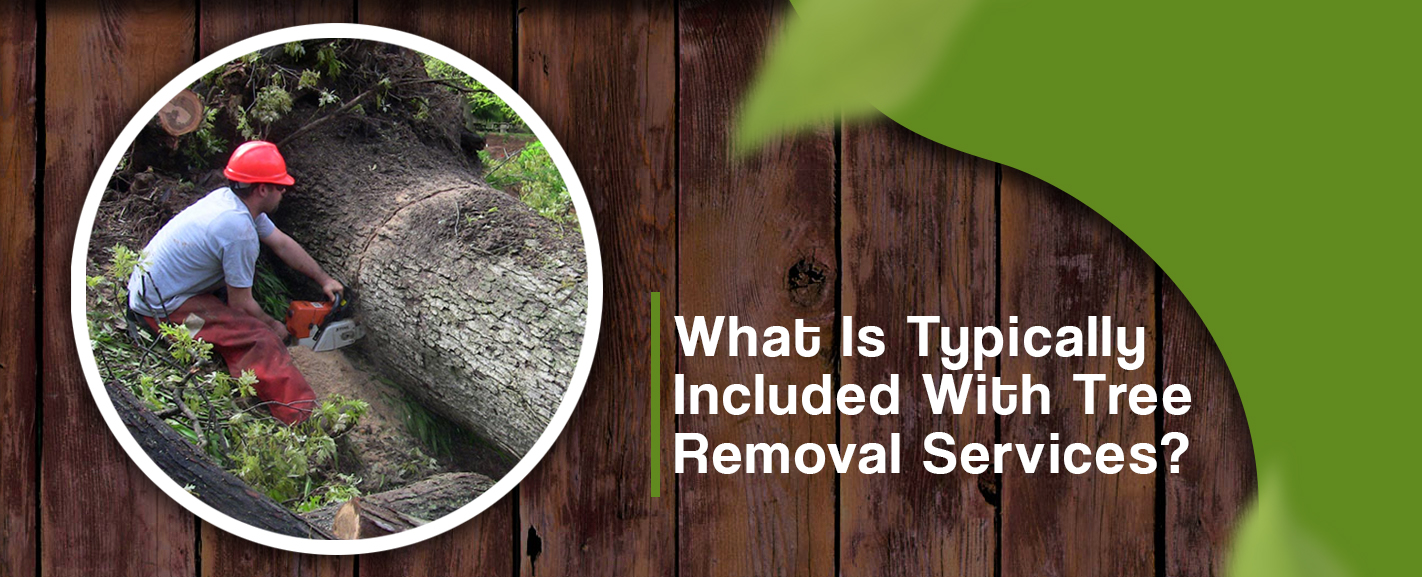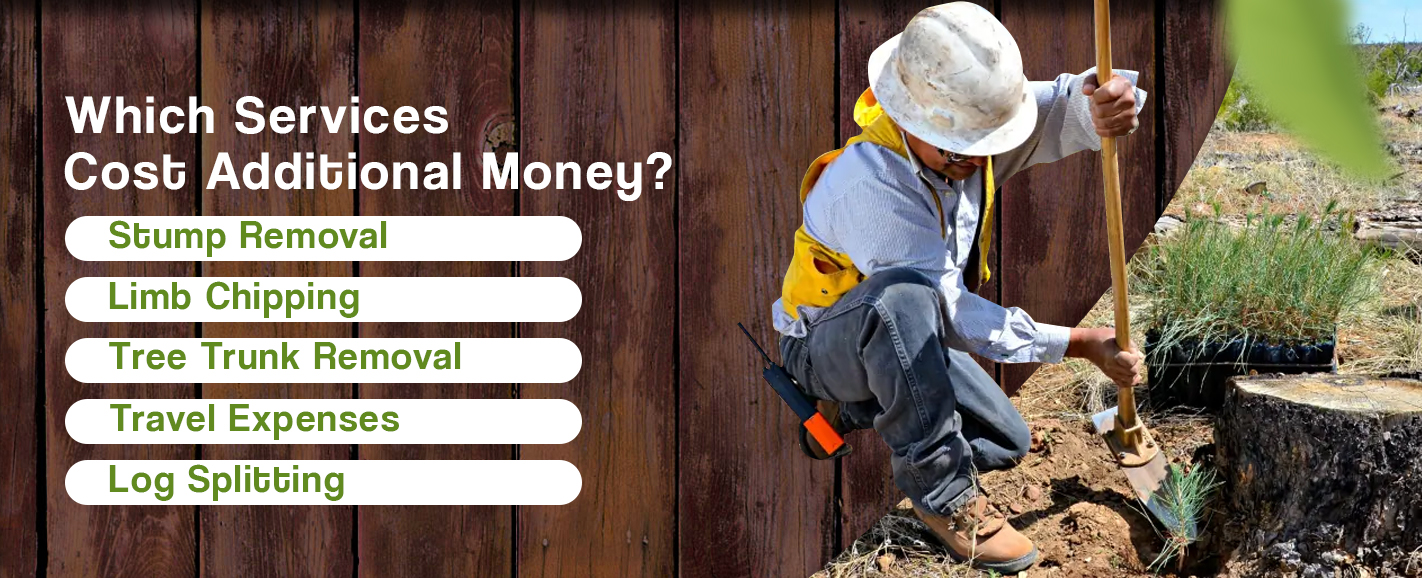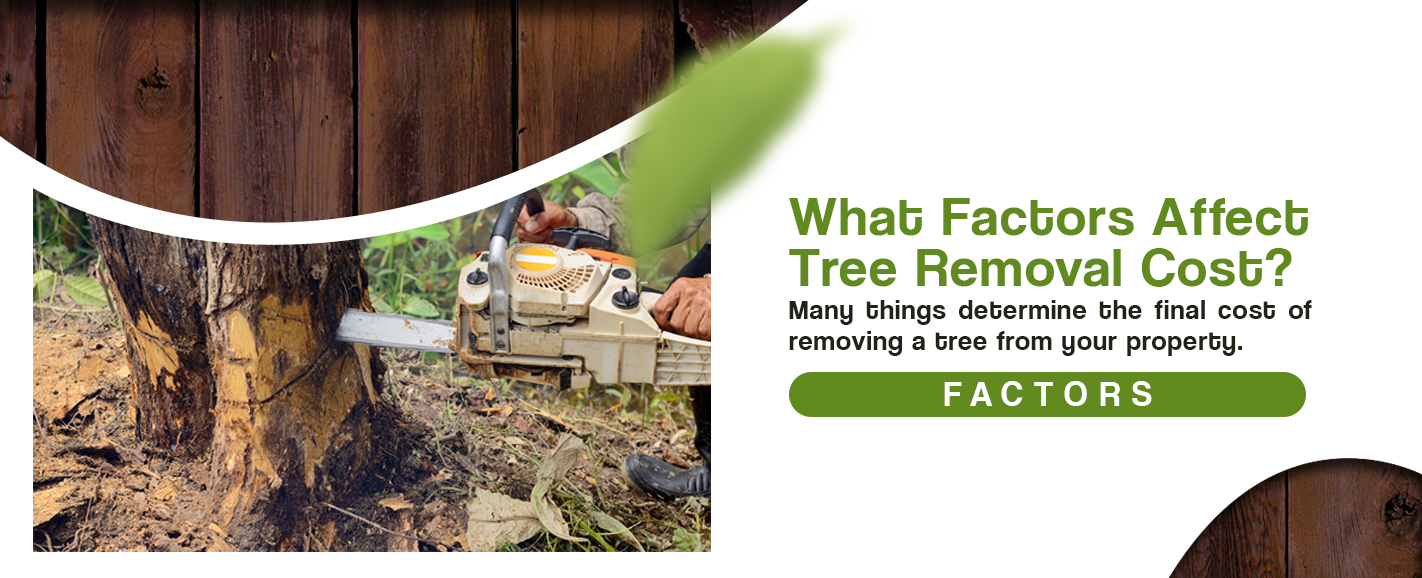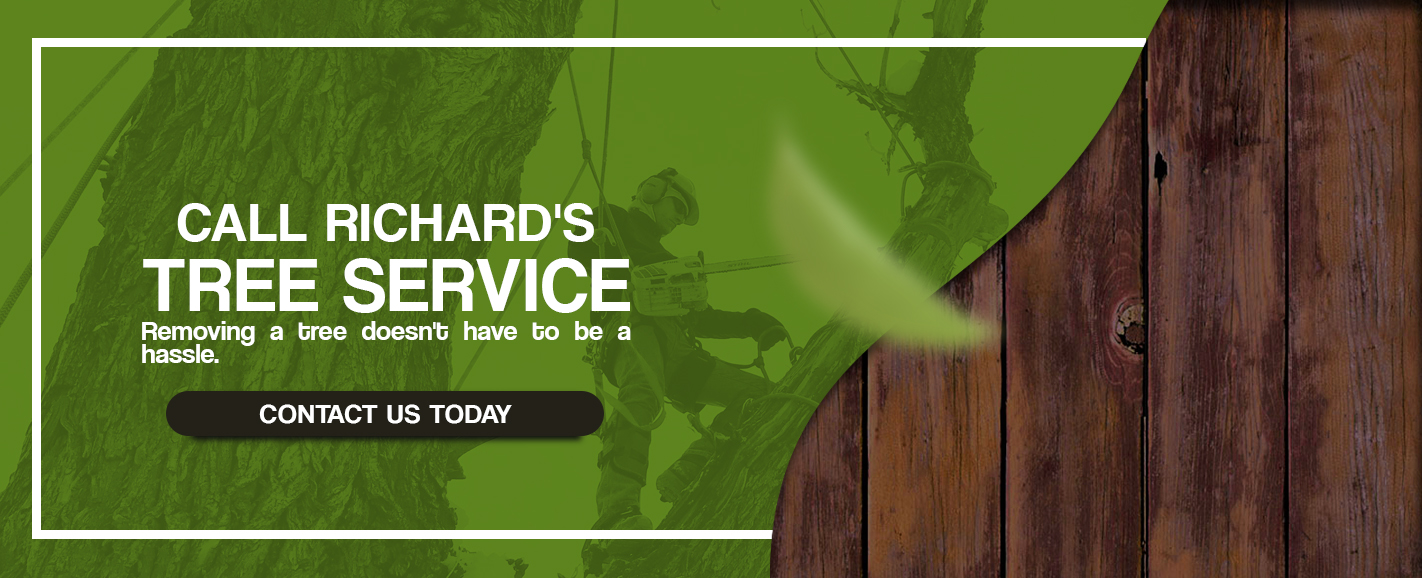
How Much Will it Cost to Cut Down a Tree?
The average cost for removing a tree is between $500 to $700, but a wide range of factors influence the final price. In this guide, we'll examine the services generally included with a tree removal company as well as the common factors that can affect the ultimate cost of a project.
Trees are beautiful and beneficial, filtering our air and attracting lovely wildlife. Besides bringing sentimental and aesthetic value, they can even increase the monetary value of your property.
But trees are not invincible. Sometimes, they pose a hazard to property or the people on it. Whether one dies, falls in a storm or leans in the wrong direction, it may be time to consider removing the tree before it causes significant damage. Hiring a certified tree removal company to cut down your tree ensures that the process will be safe and efficient. An expert company possesses the right equipment and knowledge to get the job done right.
Jump to:
- What Is Typically Included with Tree Removal Services?
- Which Services Cost Additional Money?
- What Is the Average Cost of Removing a Tree?
- What Factors Affect Tree Removal Cost?

What Is Typically Included With Tree Removal Services?
The exact services included with hiring a tree removal business vary between companies and situations. Typically, for standing tree removal, professionals will bring down the tree to a stump and haul away the trunk. At the least, they often cut the trunk into smaller, more manageable pieces and chip the small limbs and branches. Also included in the price is all the equipment and machinery needed to complete the job.
The basic tree removal fee is worth the investment — often, to take down a standing tree, the contractor will have to climb the tree and attach ropes around the trunk and high limbs. Once they're near the top of the tree, the contractor will begin cutting it into smaller pieces, working from the top down.
The typical range for tree removal runs anywhere from $150 to $1,500, but many factors affect the final cost. While it's impossible to predict the exact cost of tree removal, here are some average price ranges:
- Up to 30 feet tall — $150-500
- 30-60 feet tall — $200-1,000
- Over 60 feet tall — $1,000-1,500 or more
Keep in mind that these estimates don't factor in extra services like stump grinding, limb chipping or log splitting. Other factors such as the height, species and accessibility of the tree will play into the final cost of the project as well.

Which Tree Services Cost Additional Money?
The basic services of a tree removal company revolve around the fundamental, necessary tasks — taking down and removing the tree. But while this solves your immediate problem, it can leave you with some unwanted loose ends like ugly stumps or leftover limbs.
Often, a tree removal company will offer additional services like stump grinding or limb chipping. Keep in mind that these tasks will add costs to your overall bill, but they may be worth the investment depending on your circumstances.
1. Stump Removal
No one likes a stump. Hazardous, inconvenient and ugly, a tree stump in your yard creates more work in the long run. But stumps are a pain to remove yourself, requiring a considerable investment of time, equipment and hard work — in many ways, taking down a tree is easier than removing its stump. Tree removal companies usually offer stump removal services as well, but because of the work involved, they're almost always tied to an additional fee.
The exact cost of tree stump removal depends on many factors, such as the trunk diameter and condition. A rotting stump should be easier, and therefore cheaper, to remove than a healthy one. Generally, if the tree was between 25 and 50 feet tall, stump removal will cost an additional $80 to $473. If your tree was a giant specimen with a massive diameter, the cost to remove the trunk could run upwards of $900 or more.
There are many different ways to remove tree stumps, but many companies offer stump grinding. Grinding down a stump requires specialized equipment, but the process is often less labor-intensive and less expensive than other methods.
2. Limb Chipping
Instead of paying a company to haul off a tree's fallen limbs, you might be interested in taking advantage of the fact that some businesses offer limb chipping services. A wood chipper turns waste wood, like fallen limbs, into eco-friendly mulch. If a company has a wood chipper readily available, disposing of fallen branches shouldn't add much to the final bill. However, if the equipment isn't provided, you might have to contact another company and pay an average of $75 to have your limbs chipped.
Depending on the specific business and the number of limbs you need to be chipped, expect to pay between $50 and $100 for chipping. While getting branches chipped may add extra fees on the front end, it will minimize the leftover tree waste on your property and produce a usable product.
3. Tree Trunk Removal
At the least, a tree removal company will cut the trunk down into smaller, more manageable sections before leaving your property, making it easier for you to remove the trunk yourself.
Depending on the weight and length of the trunk, removal costs typically run between $50 and $100. Some companies remove the fallen trunk of your tree for no additional cost, but make sure you check with the business before hiring them — not every company will haul off your trunk.
4. Travel Expenses
If you live in a remote area, you might have to factor travel expenses into the cost of removing your tree. In these situations, a tree removal company is often far away from your location. If a business has to travel a significant distance to reach you, they'll probably charge an additional cost and may or may not include drive time in the final bill.
5. Log Splitting
If you have a wood-burning fireplace, you're likely achingly familiar with the chore of log splitting. The wood from a felled tree is a perfect source of winter logs, and some companies will help you get the ideal firewood without the time investment. When a business offers to split your tree's dead wood, it generally adds between $50 and $100 to the final cost of the removal. They'll bring their own log splitter to take care of the wood quickly and efficiently.
If the company doesn't have a log splitter and doesn't offer this service, you'll need to hire a professional wood splitting company, which can charge between $35 and $100 depending on the size of your pieces of wood.
What Is the Average Cost of Removing a Tree?
The type of tree you want removed will affect the cost of removal. Let's look at the common situations that may affect the price of taking a tree off your property.
1. Large Trees
It's often impossible for the average homeowner to safely remove larger-than-normal trees from their property. The taller and wider the tree, the more risk involved with cutting it down.
Unless you have professional equipment and experience working with tree removal, it's unwise to attempt to cut down a large tree yourself. Additionally, make sure the tree truly needs to be removed before hiring a business to cut it down. Cutting down a large tree generally comes with a significant cost, and less-invasive options such as trimming away dead limbs or treating diseases could cost less than removal.
Removing a large tree could cost upwards of $1,500, and some situations may cost more. Most companies will charge more than average to remove large trees because of the extra work and risk involved — for especially tall trees, workers will have to climb high and rope down the top sections of the tree before cutting it down.
2. Fallen Trees
If a tree has fallen on your property and you just need it to be moved, most companies will charge less than the price of a full removal job. A fallen tree requires much less work than a standing tree — it doesn't need to be roped, cut or uprooted. You're just paying the removal company to take the dead tree off of your property and deal with its disposal.
Many companies will charge less than $100 to take a fallen tree off your property. The final cost depends on a few factors, including whether you want them to haul the entire tree away or cut the wood into smaller pieces. In general, removing a fallen tree will cost anywhere from $75 to $150.
3. Oak Trees
Oaks are massive and majestic trees, hardy enough to survive for hundreds of years. In many climates, oaks grow tall and dense, with solid root systems and thick wood. But while these characteristics make oaks beautiful and a welcome addition to many properties, it also makes them incredibly time-intensive to remove. Many removal companies will charge more to cut down an oak than they will for other species of trees.
Oak is one of the toughest and strongest woods available, and a healthy oak tree is difficult to remove. Because of this quality, the average cost range of removing an oak tree is $200 to $1,000.
4. Pine Trees
Unlike oaks, pine trees aren't known for wide trunks or dense wood. However, some species are famous for their incredible heights — it's common for pines to reach 100 feet, and some types soar over 150 feet tall.
While small or young pines are typically easy and inexpensive to remove, tall pine trees can be difficult, frustrating and costly. Removing a pine tree from your property can cost anywhere from $200 to $1,500, depending primarily on the height of the tree. Small pines are typically between 15 and 40 feet high, and they'll be relatively inexpensive to cut down.
5. Tree Branches
Sometimes you don't need an entire tree cut down — you just need a limb or two removed. Often, a tree's branches will begin to tangle with a utility line. If a branch is interfering with power lines, call your local utility company — they should come to your property and remove the limb for free.
If you need limbs removed for different reasons, a tree removal company can trim the branches. Many companies will charge an hourly rate for limb removal, and average costs range between $200 and $300 per hour. If your tree needs several branches removed, it could take multiple hours to complete the job.

What Factors Affect Tree Removal Cost?
Many things determine the final cost of removing a tree from your property. In this section, we'll break down the most common factors that determine the final price of tree removal services: size, condition, diameter and location.
1. Size
The height of a tree will significantly impact the overall cost of the project. For small standing trees like dogwood and cherry, the average removal cost ranges anywhere from $100 to $450 or $500. Medium trees like crabapples grow between 30 and 60 feet tall, and they'll cost a little more to remove — somewhere between $200 and $1,000.
Large or tall trees, like hardy oaks or soaring pines, grow from 60 to 100 feet tall, and they'll almost always cost more to remove than smaller trees. The average price of removing a large tree ranges from $400 to $1,400, depending on the type and location of the tree.
2. Condition
The condition of your tree will also affect removal costs.
Strong, healthy trees take more effort to remove than dead or rotting trees — they put up more resistance and take longer to cut down. As a result, tree removal companies will charge more for cutting down healthy trees than unhealthy ones. Even if you have a tall oak on your property, if it's decaying, it will cost less than typical oak removal.
3. Diameter
The diameter of a tree's trunk can significantly impact removal costs. Trees with broad trunks typically have dense, thick wood. Not only does it take longer to cut them down, but the wood often weighs more than that of skinnier trees. Consequently, more work is required to safely cut the tree down in a way that doesn't damage the surrounding property.
In theory, you could end up paying more to remove a short, thick tree than a taller and thinner one. The diameter of a tree will also play into the cost of stump grinding — a thicker trunk means a wider stump that's more difficult to remove.
4. Location
The location and accessibility of a tree also affect the cost of removal. If the tree is close to a structure, it will take more care and effort to remove safely without damaging the surrounding buildings. Similarly, if it's hard to access, whether far off-road in an isolated place or next to other landscaping elements, it will probably be a more expensive removal job.
Tree Trimming Costs
Sometimes all your tree needs is a good trimming or pruning. Removing dead and overgrown branches both increases the health of your tree and boosts the curb appeal of your property. The size of the tree will most directly impact the cost of trimming. Larger and taller trees have more branches than shorter ones, and they require more time to prune and trim.
On average, trimming a small tree that's 30 feet tall or shorter will cost somewhere between $75 and $450. Medium-sized trees typically cost $150 to $875 to trim, and tall trees over 60 feet tall can cost anywhere from $200 to $1,000 to trim thoroughly.

Call Richard's Tree Service
Removing a tree doesn't have to be a hassle. At Richard's Tree Service, we're a team of licensed arborists that have served the Northern Virginia, D.C. and Maryland area for over 20 years. We're dedicated to providing expert service and care — whether you need your tree removed, trimmed or evaluated, our expert technicians are there to help.
Contact us today for a free quote for tree removal, or call us at 703-454-5179. We look forward to hearing from you!
If it is an emergency please call us immediately at 703-354-3667.
Use this form to schedule a FREE estimate. After submitting your form, our team will contact you to set up this appointment.
